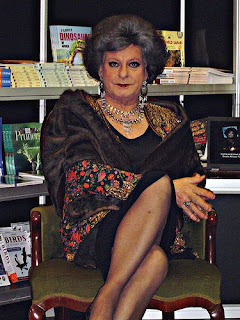He went up to Christ's College, Cambridge, where his moral tutor was C.P. Snow. After two years he was given a wartime courtesy degree without taking a tripos.
He studied at Westminster Hospital and qualified as a doctor in 1944, and subsequently specialised in psychiatry. His asthma precluded his having to do military service. He g
 ained a Diploma in Psychological Medicine in 1951, and then trained in the Jungian school but was not a strict adherent. In 1942, he married Catherine Cole, who subsequently became a children’s novelist.
ained a Diploma in Psychological Medicine in 1951, and then trained in the Jungian school but was not a strict adherent. In 1942, he married Catherine Cole, who subsequently became a children’s novelist.In 1964 Storr published a book called Sexual Deviation which sold quite well, and strongly influenced thinking in the English-speaking countries. Quite possibly, from the internal evidence, Storr thought that he was writing a liberal book, an intelligent mix of common sense and psychoanalysis, a plea for compassion rather than condemnation of the poor perverts. However looking from 45 years later, the book comes across more as a compendium of heterosexist prejudices and untested assumptions. A particularly dubious technique of Storr's is to give one, that is only one, anecdotal example as the basis of his generalisations. There are no footnotes or other references to evidence, or refutations of alternate positions. One is expected to accept his wisdom.
His standard in deciding what is sexually deviant is 'emotional maturity', a concept on which 'there is so much agreement' that it can simply be defined as 'the ability to form a stable relationship with the opposite sex which is both physically and emotionally satisfying, and in which sexual intercourse forms the main, though not the only, mode of expression of love'. He does acknowledge that there are homosexuals who are stable, balanced and mature, and that there are immature heterosexuals: 'Nevertheless, it is still true to say that heterosexuality is a more mature form of sexual behaviour'.
He admits that ‘minor degrees of fetishism can be detected in every man, and there is no point at which one can say that normality ends and pathology begins’. He also thinks that fetishes have their origin in very early childhood. Only men are fetishistic; women have no such need ‘because they do not have to achieve or sustain an erection’.
His chapter on transvestity follows immediately on his chapter on fetishism, and it is presented as a variation thereupon. He also repeats the common misconception that transvestites dress usually to masturbate. He gives no reason to assume that masturbation is more common among transvestites than among other men. This false premise also leads to his conclusion that there are no female transvestites and that female cross-dressing is of a completely different nature. He gives the standard psychoanalytic interpretation of transvestity as follows:
“The homosexual man replaces his love for his mother by an identification with her: the fetishist refuses to acknowledge that a woman has no penis. The male transvestite assumes both attitudes simultaneously. He fantasies that the woman possesses a penis, and thus overcomes his castration anxiety, and identifies himself with this phallic woman.”He adds to this that the transvestite is imagining a “seductive courtesan” and identifying with her as a phallic woman. This phallic woman need not be his mother for such images are easily found, e.g. witches and mother goddesses, both of which come with many phallic symbols. To a small child women in general appear threatening and powerful. Therefore a transvestite gains masculinity rather than loses it by identifying with such a masculine and powerful woman. Such an identification argues a “fairly complete failure” in the normal separation of a boy from his mother in growing up, and also “a failure to relate emotionally to any person other than the mother”.
He does note that for ’normal’ men, the desire to dress as female is widely catered for vicariously in public entertainment.
He discusses that there are also men who seek an operation to “change their sex”. This is possible for anatomical hermaphrodites, but “this is very far from changing the sex of an individual with normal organs, and such an operation is of course impossible”. This was written in 1964, a decade after Christine Jorgensen’s operation had received extensive media coverage. The word “transsexual” is not used at all – although he is writing a full decade after Cauldwell, Benjamin and Ed Wood had put the word into circulation. Such men are submitting to “castration” because they have “given up all hope of competing with other males on anything approaching equal terms”. Those who express the “delusion” of becoming the opposite sex “are invariably psychotic”. In such a schizophrenic the patient's ego “is overwhelmed, so that he is no longer able to exercise conscious control, and is at the mercy of phantasy and unconscious contents”.
Female cross-dressing is merely a part of lesbianism which is merely the normal schoolgirl crush for another female extended into adulthood because of a shortage of men or because of emotional immaturity. Such lesbianism is of course always “faute de mieux”, although it may be better than nothing. Female cross-dressing is on the decline.
“Thirty years ago England seemed peculiarly apt at producing a stalwart breed of commanding women clad in collars and ties, tweeds and boots, striding manfully through life with hair cut short and faces innocent of cosmetics. Increasing psychological sophistication has diminished the numbers of those who display their adoption of the masculine role so blatantly.”He also wrote books on depression, the psychology of music, gurus and charismatic leaders, and the value of solitude. He also served on the Parole Board and a Home Office committee on obscenity and film censorship.
He had three daughters with his first wife, Catherine Storr. They divorced in 1970, and he married again.
He died aged 80 of a heart attack.
- Anthony Storr. Sexual Deviation
. Harmondsworth: Penguin Books. 1964.
- Anthony Stevens. “Obituary: Anthony Storr, formerly Honorary Consultant Psychiatrist, Oxford Health Authority”. Psychiatric Bulletin. 2001, 25:365-6. http://pb.rcpsych.org/cgi/content/full/25/9/365.
- Christopher Lehmann-Haupt. “Anthony Storr, 80, Psychiatrist and Writer”. The New York Times. March 28, 2001. www.nytimes.com/2001/03/28/world/anthony-storr-80-psychiatrist-and-writer.html.
For the female fetishism that he does not acknowledge see the references in my article on Autogynephilia. For the sexuality of female-to-male cross-dressing see Lou Sullivan.
There is very little that is original in Storr’s book, but, as a Penguin, it was widely available, for many in the 1960s it was the only book that they read on the subject. It was on the reading list for my first year psychology course at university. Almost all his ideas had been previously proposed by psychoanalysts.
These psychoanalytic ideas are fortunately not as common now as they were in the 1960s. However they were largely and uncritically accepted by Kurt Freund and Ray Blanchard and have been incorporated into their concept of Autogynephilia. They are also being recycled in a simplified and mean-spirited way by many of the HBS people.
Storr got indifferent marks at school, and got into Cambridge anyway. The British class system at work.









